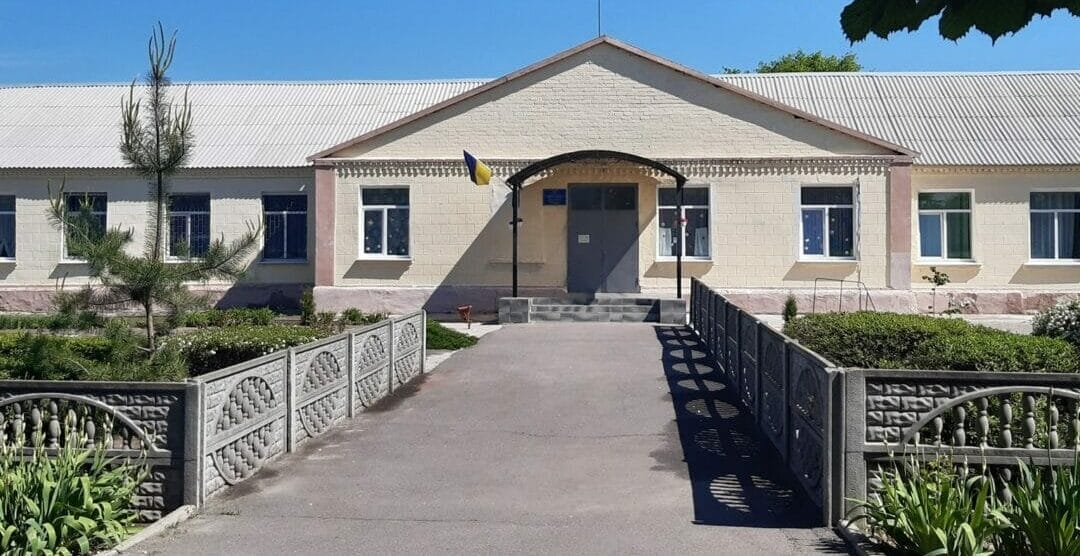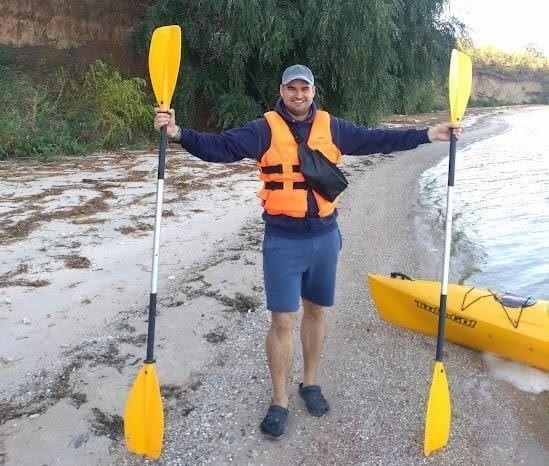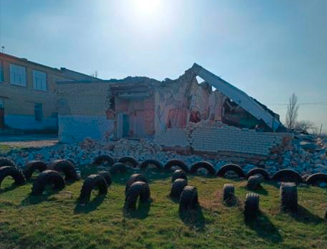This website uses cookies so that we can provide you with the best user experience possible. Cookie information is stored in your browser and performs functions such as recognising you when you return to our website and helping our team to understand which sections of the website you find most interesting and useful.
Mala Bilozerka Territorial Community

The number of the Community residents as of early 2022 amounted to 14,454 residents:
Women: 7,153 residents
Men: 5,805 residents
Children: 1,496 residents
The area of the Community totals 589.1 km2.
The Mala Bilozerka Community is located in the western part of the Zaporizhzhia Region near a watercourse at one of the sources of the Velyka Bilozerka River, at a distance of 2.5 km away from the villages of Ulianivka and Novobilozerka. The Community consists of eight settlements, has a good geographical location; roads T 0810, T 0817 and railway tracks pass through the Community, the Mala Bilozerka station is 1.5 km away. The Velyka Verbova watercourse originates on the western edge of the village.
History
The village of Mala Bilozerka, founded in 1784, is one of the oldest villages of the Zaporizhzhia Region. The first written references to the settlement were recorded in the early 19th century. And the first settlers were thirteen Cossack families from the Chernihiv Province, who were allowed to settle on uninhabited land. They built their huts in the upper reaches of the Bilozerka River and named the settlement Verkhnia Bilozerka. Later, many state peasants from Poltava, Kursk and other provinces arrived.

At the turn of the 18th and 19th centuries, religion played an important role in the life of the young settlement, which was still called Verkhnia Bilozerka, so the construction of temples became an integral part of the village’s history.
In Verkhnia Bilozerka, a wooden prayer house was first built, later a stone Church of the Exaltation of the Cross, and in 1884 a single-seat church with a high bell tower was built, consecrated in honour of St. Panteleimon. During the Soviet era, the temples were destroyed.
They tried to blow up the three-seat Church of the Exaltation of the Cross, and in 1934 it was the turn of the St. Panteleimon Church. The church in the village of Mala Bilozerka was closed down, the cross was taken away, the church utensils were looted, and the club was first organized in the building, and then the oil tank.

In the 19th century, the territory was at the crossroads of important historical events. In 1917, it was part of the Ukrainian People’s Republic. In late 1918, under the control of the Revolutionary Army of Nestor Makhno. In 1922, there was a permanent communist regime. In 1932, the Bolsheviks resorted to terror by starvation against the local population.

The present-day territory of the Community is full of mounds and archaeological sites. The most famous burial site is the Haimanova Grave, a Scythian burial place classified as a “royal” one (burials with a large number of precious jewellery and household items), near the village of Balky, the creation of which dates back to the 4th century.

Economy and Welfare
The Mala Bilozerka Community has a developed economic base; a powerful mining entity of the Zaporizhzhia Iron Ore Plant operates in the territory of the Community, the construction of which started in the Tavrian steppes in 1961. Several types of ore are mined at the plant: sintering ore, Martenivska ore.

The modernization of the Crushing and Metering Complex is underway, which will make it possible in the future to increase the volume of ore extraction at the Pereverzivske deposit to the mark of 1.5 million tons per year, and in general to extract at least 4.5 million tons at the plant within 50 years.

No less important contribution to the local budget is made by agricultural enterprises, 182 of them are registered in the territory of the Community. A third of the residents of the Community work at the enterprises. Self-employment is also developed: more than a quarter of the Community residents are engaged in growing greenhouse crops.
The social and cultural sphere of the Community is represented by four health care facilities, where residents of the Community can receive professional medical care. There are also six preschools located in the territory of the Community.

The Community develops education: there are seven secondary schools functioning in its territory. They include is the municipal institution “Mala Bilozerka Dyvosvit II-III Degree Specialized Aesthetic Boarding School”, an innovative educational institution, which today is an Associated School of UNESCO. The experimental site of the Institute of Vocational Education and Adult Education of the Academy of Pedagogical Sciences of Ukraine dedicated to the problem of “Development of the creative potential of students by means of decorative and applied art” works in the Community. The Dyvosvit grammar school is the holder of the honorary title “Leader of Modern Education”, a two-time bronze prize-winner and multiple award-winning participant of the International Exhibition of Educational Institutions “Modern Education in Ukraine”, a laureate of the Ukrainian National Contest “100 Best Schools of Ukraine” in the nomination “School is a socio-cultural centre of a village”.


Also, two specialized music schools, culture centres, and a sports and leisure centre successfully function in the territory of the Community.

The Mala Bilozerka Territorial Community cooperates with many organizations. For instance, the project “Overcoming digital inequality” has been implemented with the support of the Association of Cities of Ukraine, in cooperation with the NGO “Ukrainian Agency for Innovative Development” and the NGO “Centre for Educational Reforms OUR CHILDREN”. A modern Administrative Services Centre has been opened in cooperation with the ULEAD with Europe and the German Society for International Cooperation (GIZ). Together with the NEFCO program, the modernization of the water supply system and the insulation of the basic educational institution are planned.
As a result of its good geographical location, the Community has access to the Kakhovka Reservoir and available recreational lands, so active recreation, kayaking, canoeing developed and was popular in the Community, and it is planned to organize a number of weekend tourist routes. However, on 06 June 2023, the Kakhovka Reservoir was blown up by the russian federation.


Community and War
Before 24 February 2022, the Community developed rapidly, but after the invasion of the russian federation, the local residents did not even have the possibility to buy bread; however, despite this, from the first days, people collected aid for territorial defence units. There was no house that did not join this initiative; the residents did not give up. On the contrary, they began to plan the future and social projects even more diligently and find ways to work even despite the occupation.


During the full-scale war, the local authorities have acted as a humanitarian HUB. Together with their like-minded people and activists, they have helped the elderly and provided the paramedic-midwifery centre with medicines, transported humanitarian aid from Zaporizhzhia to the occupied territories, and tried to help people who refused to accept aid from the invaders.
The Mala Bilozerka Community was completely cut off from the gas supply. There are power outages. That is why they prepare for winter very responsibly by stocking food, drying vegetables for borshch, and making canned food. As a result, the Community residents can not only rely on humanitarian aid, but prepare for the hard period.

The war has changed the worldview of the Mala Bilozerka Community residents and united them. After the war, the residents of the Community will face new challenges. This includes rebuilding their villages, creating a long-term development plan, and physical and psychological rehabilitation. All the issues that have been postponed will have to be solved in new conditions. The Community development is the number one challenge for the Community leadership. The war exposed all the negative aspects that need to be worked on. Turning these negatives into positives will become a priority in the future.
People of the Community
Village Council head Serhii VOVK

The Village Council head is actively engaged in cooperation with international organizations, implementation of international and regional projects in the Community.
By decree of the President of Ukraine, the head of the Community, Serhii Vovk, was appointed the head of the military administration. At present, the head and departments of the Village Council are actively working on the program “PLANNING AND PREPARING COMMUNITIES FOR RECONSTRUCTION AND ECONOMIC RECOVERY”.

The important aspects of the population in the territory of the Community include the active development of social life. People there not only live next to each other, but also join common initiatives and projects aimed at improving the quality of life of all the residents.
One of the inspiring personalities of the Community is Nataliia Kononenko. She is the Head of the NGO “Na Varti” and is known as a counsellor of the Mala Bilozerka Territorial Community. Together with her friends, she wants to open her craft shop with the original name “Lovka Lavka”. Local products will be sold there, including home-made pastille, which is made on their own. For this, they have already purchased a dehydrator for drying vegetables and fruits. Pastille is environmentally friendly and contains no sugar. They use their free time to study in order to develop their business in the future and implement new Women’s Social Entrepreneurship.
Development Strategy
The Mala Bilozerka Rural Territorial Community started work on the strategy in December 2021, but due to the invasion, the priority areas have undergone significant changes. The Community aims to develop as an industrial and logistics centre, with an emphasis on the processing of agricultural products, and self-employment of the population and the Community also has potential in the development of tourism and recreation.
After the war, the residents of the Community will face new challenges. This includes rebuilding their villages, creating a long-term development plan, and physical and psychological rehabilitation. All the issues that have been postponed will have to be solved in new conditions.
“Community development is the number one challenge,” says Nataliia Kononenko. – The war has exposed all the negatives that need to be worked on, I really want to turn these negatives into positives so that they become a priority in the future. I think that everyone has already understood the area of development – the head, the counsellors, and the residents.”
One of them will include the improvement of the environmental situation.
“There is an environmental disaster in the occupied territories, in particular due to the numerous cases of burning wheat fields and forest strips. Therefore, after the war, there must be a full-time ecologist in the Community, says Nataliia. – Community development should always be based on improved people’s lives. They should be happy and feel safe here. We are working on this.”
Cooperation between municipalities
Berezhany Urban Council of the Ternopil Region
Enerhodar Urban Council of the Zaporizhzhia Region
Vasylivka Urban Council of the Zaporizhzhia Region
List of Sources
- Official websites of Zaporizhzhia Iron Ore Plant PJSC
- Mala Bilozerka Dyvosvit II-III Degree Aesthetic Boarding School
- Facebook page of the Mala Bilozerka Territorial Community
- Interview with the Community representatives
- How the Mala Bilozerka Community is working on development despite the occupation, lack of bread and medicines
